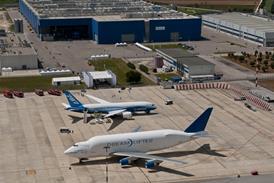EASA is planning to change regulations to make it easier for airlines to outsource continued airworthiness management to external maintenance partners.
Air transport category operators can subcontract such tasks to certified continued airworthiness management organisations (CAMO) already today, but the airlines need to have an own CAMO approval in the first place. This is connected to their air operators certificate (AOC) under current EASA regulations.
Airlines are demanding more flexibility, however. They want to be able to outsource CAM work without the mandate for an own CAMO approval.
EASA has been working on new regulations for six years and proposed an amendment to the current rule in July 2010. A year later, policymakers rejected the proposal because the issue was considered "too complex", says Rosa Tajes, continuing airworthiness officer at EASA, at the MRO Europe conference.
But she adds that EASA will issue an opinion before year-end to try again to amend the current rule. This will typically take 9-12 months until the policymakers start to debating potential changes, but there seems to be wide-ranging agreement that the current regulations need to be updated.
Jorge Leite, vice-president quality at TAP Maintenance & Engineering, says that it would, for example, make sense for an operator with a small fleet of complex, new-generation aircraft to transfer continued airworthiness management to an external CAMO, which might have more technical expertise for the type than the airline. In that case, the operator would not have to make the investment for a respective own approval.
Growing popularity for total support maintenance contracts, which could include continued airworthiness management too, is another example.
David Innes, principal consultant at Baines Simmons, says that new regulation is "long overdue" to ensure tighter control of the issue. He says that CAMO-approved airlines have undertaken "extreme outsourcing" under current regulations, where continued airworthiness management was subcontracted to CAMOs, which in turn handed it on to other agents. It may then become unclear who is in charge to ensure compliance, he adds,
The biggest challenge, he says, will be to understand the difference between splitting management tasks and control. The operator will always remain responsible for the aircraft's airworthiness and thus needs to put in place measures to control CAM, no matter whether this is being conducted in-house or externally.
Source: Air Transport Intelligence news























